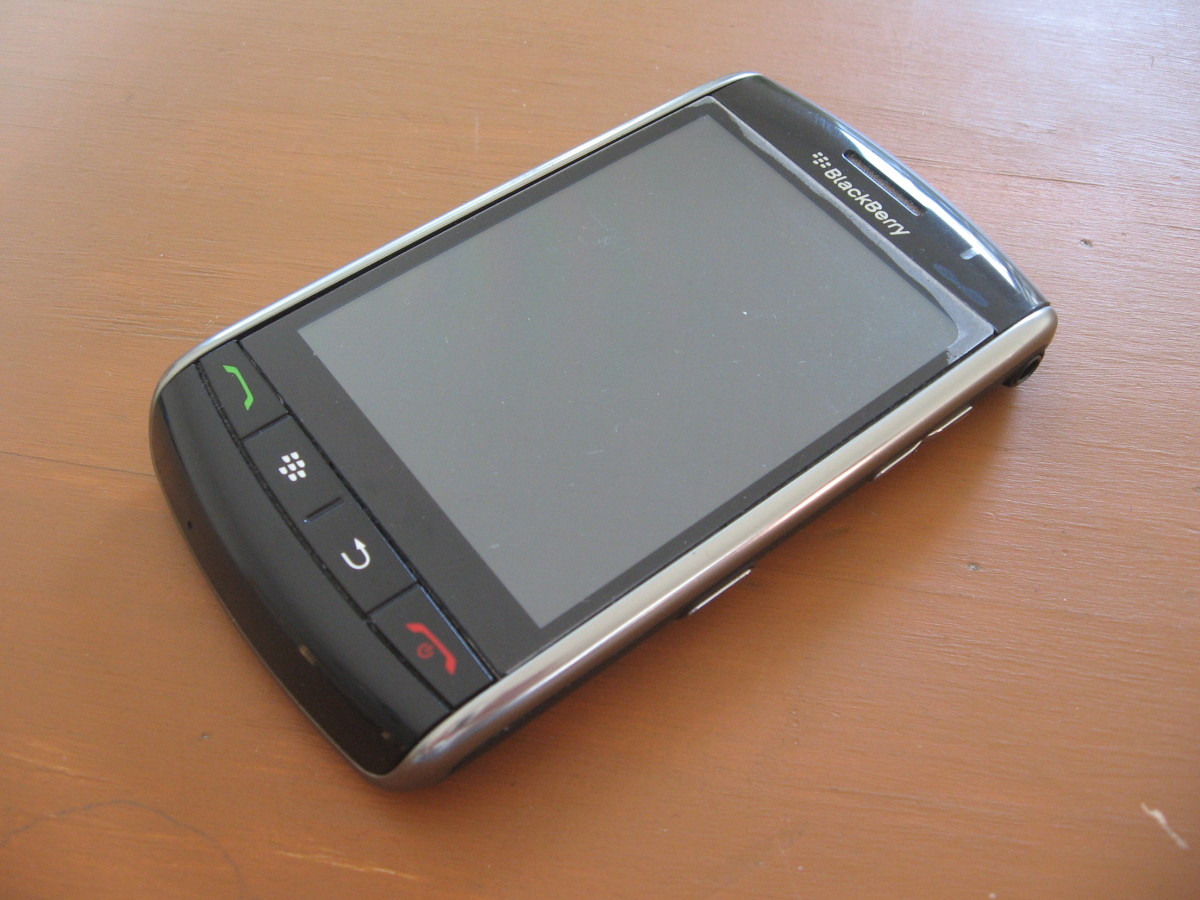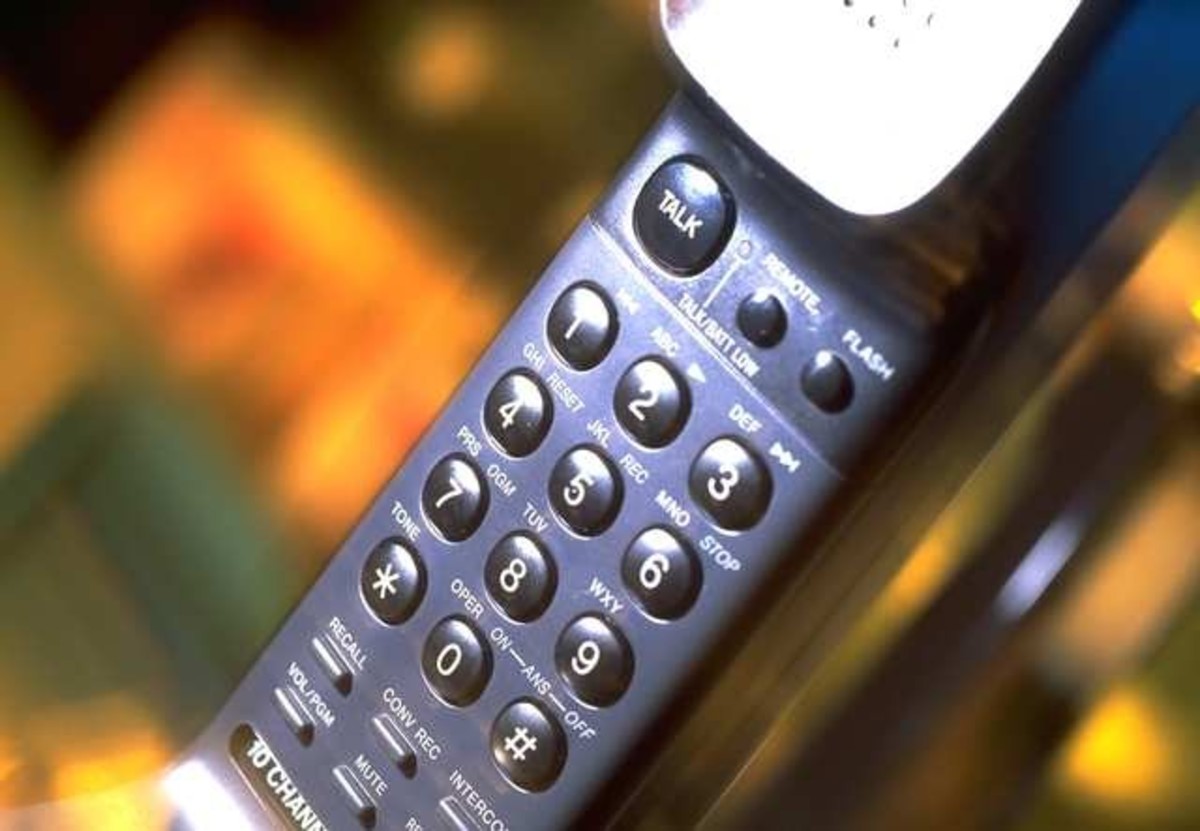Modern Libraries – Where New Noise Standards Degrade Maturing Minds
As a dedicated, regular user of libraries, I have observed once quiet spaces degrade into circuses of conflicting purposes with choruses of intrusive noises.
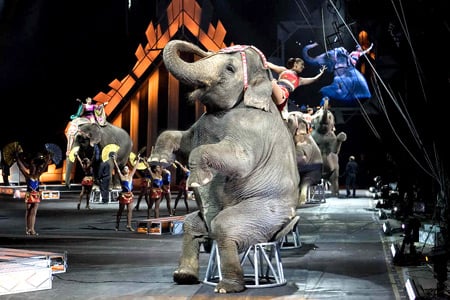
Mobile Phones Demolish Social Standards
A new class of noisemakers, unlike any in the history of humankind, has invaded our sanctuaries of peaceful inner thought. I am talking about mobile phones, of course, with their song-bite ring tones, keypad noises, and eager, babbling users who have developed an unprecedented insensitivity to other people around them.
This potentially useful technology has become a toy in the hands of socially ignorant users who find massive support in a modern society that fails to teach people the most basic rules of polite behavior. As a result, I have observed the quality of modern libraries go downhill.
The Problem
A confused line of thinking has overtaken the library profession. This confused line of thinking embraces the concept of "the new library" – an outwardly active place where library leaders enthusiastically endorse the noises of new communication technology without guaranteeing proper containment of these noises.
The builders of traditional libraries never designed library spaces to accommodate mobile telephone technology. Consequently, cell phone technology is frequently out of place in these spaces. Quite the contrary to what modern library leaders say, modern libraries are, in fact, degrading because of lax attitudes towards noise.
Instead of preserving the original integrity of a library's shared public atmosphere, a consortium of librarians is mistakenly adopting a new standard to allow once-unacceptable noise to prevail, in order to make libraries appear more stimulating. In justifying a new noise standard, this consortium of librarians is blatantly ignoring a prime requirement for individual study, thus, redefining what a library OUGHT to be, rather than maintaining what a library has PROVEN to be over previous decades.
The Biggest Mistake
Inherently conflicting activities such as talking and reflective thinking cannot co-exist where building structures and space allocations do not clearly separate the two. In other words, new noisy activities cannot happen without new building designs that insure that the various new activities do NOT conflict with the old activities.
For example, to adequately insure that cell phone users do not disturb traditional quiet patrons, there must be total separation (spatially and acoustically) between the two types of library users. Librarians cannot, under any circumstances, allow the new cell phone behavior to occur without guaranteeing the necessary physical separation and hands-on enforcement to properly manage it. Nothing else works. I have experienced this first hand, repeatedly, in every library around me.
The concept of “different strokes for different folks” requires different physical accommodations. Perhaps different uses CAN exist under the same roof, but NOT in the SAME OPEN SPACE.
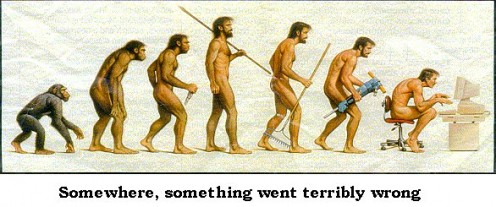
Confusing Revolution With Evolution
Instead of admitting honestly that cell phones completely conflict with the fundamental human need for quiet, library leaders seem to force the new technology down the throats of the old library users. A child-like excitement over the new communication revolution is destroying the evolution of intelligence whose foundation is quiet study. Mixing cell phone users with quiet library users is a grossly false premise, a mistake to even consider, and a nightmare to enforce. Again, I have witnessed this firsthand, multiple times, in multiple locations.
My experiences with cell phones in libraries demonstrate an extraordinary failure of reasoning that undermines guaranteed quiet for people who need to think. Truly enlightened, responsible librarians cannot, with any legitimate justification, turn away their most faithful patrons by enabling the noisy behavior of cell phone users.
The True New Library NOT So True
Modern libraries try to satisfy different needs:
- traditional quiet patrons who want to read
- patrons who want to work on computers in total silence
- patrons who want to talk on cell phones while working on computers
- patrons who want to form group parties at a single computer
- single-mother patrons (accompanied by their crying infants) who want to use computers
- noisy children patrons who want to use the library for various extracurricular activities
- students who want to study together in groups
All these different needs require different spaces to insure that meeting any one need does not disturb meeting any of the other needs. Again, the noises of different library users dictate the requirements for different spaces to accommodate their inherently conflicting noises.
An important consideration in accommodating different library users is to insure that no one group of users has better conditions than the others (e.g., equipment, atmosphere, lighting, and ergonomics). Each group should find equal inspiration in its respective surroundings (e.g., space, lighting, windows, equipment, staffing, and internet speed).
What This Means Now
What this means now is that we cannot possibly accommodate all these cross purposes in one space. Until new complexes are built to fit new technologically-driven behaviors, we must respect the quiet people who came first. Banning cell phones as talking devices in libraries is the only way to insure that cell phone users respect quiet people.
If people want to use cell phones in a shared space, then they should go outside this space. Such a rule simply honors the library institution. Such a rule does NOT disable new advances, but rather supports the proper contexts of new advances.
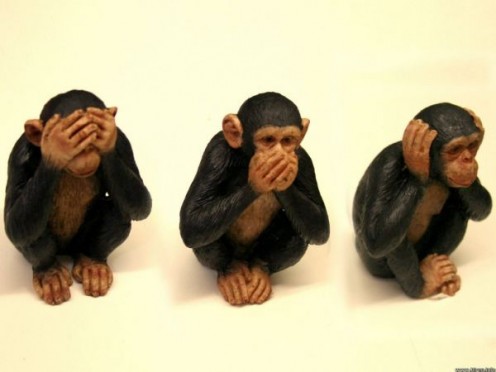
Task Deafness And Administrative Blindness OR Hear No Evil
Library staff literally cannot hear the most debilitating effects of the cell phone problem. Library administrators literally cannot see the depth of the problem. Perhaps they are so focused on managing the CONCEPT of the "new library" that they have lost sight of managing the PEOPLE and the BEHAVIOR that gives validity to such a concept.
Library employees do NOT regularly use a library in the way an actual patron might use it. Library employees do not regularly use public access computers or other patron areas in the same ways that patrons might use these areas. Library employees are NOT in an actual library user CONFIGURATION. Rather, library employees are in a configuration of managing, which means that they are NOT performing library patron tasks, under patron circumstances, driven by patron requirements and expectations, under patron time constraints.
For example, a library staff person does NOT sit with his or her ears located two feet away from another patron talking on a cell phone at an immediately adjoining computer station for minutes on end, constrained by a timed session that might be dedicated to quiet reading. Instead, the staff person might be 20, 30 or more feet away, located at a circulation desk, where normal business is to talk to patrons. At this distance, a soft cell phone conversation is inaudible. But at two feet from a person's ear, even a soft conversation disables a reader's basic ability to assimilate certain complex written information such as math, literary essays or philosophy. Library staff members, therefore, are deaf to intimate cell phone conversations and deaf to the intimate disturbances that cell phone conversations cause. Quiet readers, on the other hand, are assaulted by these insidiously hidden disturbances.
Realities Of Sound
Sound from a point source (such as a talking mouth) reduces in volume (according to an inverse square law) about six decibels for every doubling of distance from the sound source. A person merely passing by at eight feet from a talker does NOT hear what a stationary reader two feet away hears. The person merely passing by a talker experiences not only a significantly lower level of sound, but also a further reduction of sound, caused by the Doppler effect on the approach to and departure from the talker. In other words, the passer-by NEVER experiences the same sustained sound as the person sitting still, located intimately close to and under continuous bombardment by the talker. A staff person walking by at eight feet (maximal close range) FOR ONLY AN INSTANT certainly cannot hear such a disturbance. The disturbance is at an INTIMATE distance, over a SUSTAINED time period, at a greater INTENSITY for the person trying to read.
Policies that allow cell phone use and burden patrons with reporting disturbances are excessively unreasonable, because such policies allow for multiple, successive interruptions by different cell phone users, causing multiple delays, multiple and accumulated losses of time, loss of concentration, and possible disappearance of the disturbance before a staff person can even attend to it. Furthermore, such policies enable multiple, unpredictable assaults by multiple, unpredictable cell phone users on a single, quiet reader who can never experience a span of uninterrupted quiet time.
Policies Based On Erroneous Perceptions
The horrible irony here is that both cell phone users AND library staff members are deaf, because their own specific tasks depend on noise. Consequently, the quiet reader, whose specific task depends on silence, suffers unjustly.
The gravest of errors here is using staff perceptions of noise and administrative concepts of noise as truth, when the real truth is a reader's experience of the noise.
If library staff members cannot hear subtle, insidious and debilitating noise disturbances, then they cannot understand these disturbances any more clearly. Library administrators are even farther away from the point sources of cell phone disturbances. Library administrators rely on perceptions of their subordinate staff members, who are deaf to the cell phone facts (through no fault of their own). Consequently, administrators can become equally blind to the problem because:
- they cannot understand individual patron complaints, and
- they cannot obtain valid information from their trustworthy staffs who are out of touch with the intimate realities of the problem.
The comedy of errors gets even more laughable when academic experts try to create new definitions of libraries based on false perceptions that allow physically conflicting activities to unfold in the same ill-defined space. These experts simply are NOT looking at the problem CLOSELY enough from an actual quiet library user's position. The theoreticians are not "test driving" their own theories in actual practice, where they (the theoreticians) themselves "sit in the driver's seat".
Other Noise Pollution
In general, noise pollution occurs because library leaders are not defining spaces clearly enough. Library planners are not designing buildings adequately to accommodate different spaces. They are not partitioning those spaces acoustically. They are not actively enforcing appropriate standards for task-specific spaces.
For example, a public library that I use regularly has a large, circular atrium with a high dome ceiling that connects all of the following areas:
- main entrance,
- short hall leading to bathrooms and main conference room,
- circulation desk,
- children's library, and
- adult library.
All these areas fan out from the central atrium, which has NO glass or other acoustical features to prevent sounds from bleeding between the different areas.
A person located in the adult library can hear a confusion of noises that include:
- talk from the circulation desk,
- talk from patrons entering and exiting, meeting, greeting and conversing with one another,
- talk from parents loudly correcting their loudly talking children,
- cries from babies,
- talk from conference groups shuffling in and out of their meeting room and the main entrance.
All these sounds become enhanced, reflected and amplified by the circular atrium. All these sounds are accompanied by unchecked, ringing cell phones, and they are boosted by unchecked, unpredictable talking on cell phones. Noise sometimes reaches the level of a party that renders quiet concentration at public-access computers impossible.
Exterior Form Belies Interior Dysfunction
This particular public library looks beautiful on the surface. It is located on top of rolling green hills, nestled in a country setting of trees and natural wet areas, adjoined with hiking trails and a butterfly meadow. Its interior has comfortable seating and inspiring lighting, both from large windows and from well-placed, full-spectrum, artificial lighting fixtures. The noise, however, deforms this otherwise contemplative environment into a zoo of conflicting purposes.
Such an exterior appearance without interior functionality illustrates the problem that any library can face, when leaders do not deal with issues of noise decisively.
Aesthetics And Value In Quiet
From architectural and engineering standpoints, how do we partition library users who have different needs, without creating a mechanical mall of sealed cages?
Is it even possible to create aesthetically pleasing and inspiring library buildings where quiet spaces and noisy spaces mesh within the same concept? I have major doubts.
I propose that silence is an important value that is missing from modern education. The missing value of silence is disabling the design of buildings that incorporate it. Educators and leaders are not teaching people that quiet offers the opportunity to discover an inner sense of beauty. Quiet buildings, then, are spaces where people can contemplate this inner sense of beauty and inner sense of respect for all things.

What I Say To What Experts Say
"Ultimately, how do we draw a principled line between phones and computers?"
MY ANSWER: Simple, we draw the line between TALKING and NOT TALKING. The error here is equating new, silent uses of cell phones with their traditional uses as audible communication devices. Ban the talk, and allow the quiet computing. Again, simple.
- Woody Evans: "How much better it will be, then, to make cell phones and related tools work for the library, rather than making librarians rush around like the zealous shushers of yestercentury, trying to keep this new tool off our turf."
MY RESPONSE: How unrealistic Woody Evans is in thinking that there is no need for “zealous shushers". He badmouths a necessary function of librarians. He further implies that the act of enforcing a standard is an antique practice – a very dangerous attitude for any civilization that values its long term integrity.
"But can we really justify banning their [cell phones] use, as so many librarians now do?"
MY ANSWER: Absolutely YES. We can justify banning cell phones in libraries for talking or for other noise-making activities, if these noises are not absolutely contained by architecture and engineering within a designated space.
- Leah White: "Just because a patron is on a cell phone doesn't necessarily make that person insensitive to others' needs."
MY RESPONSE: It most certainly does. When a person neglects to observe his or her surroundings and neglects to empathize with others before making or receiving a cell phone call, then he or she is being selfish, indulgent and inconsiderate of others' needs.
- Leah White: "This [the issue of using cell phones in libraries] boils down to a concept that library leaders like Michael Stephens, professor of library and information science at Dominican University (and LJ columnist) have long advocated: trust the user."
MY RESPONSE: Trust the user, enable the abuser. Leah White is conveniently misapplying a sometimes-useful philosophy to a specific, proven, disturbing behavior, where cell phone users have consistently proven that they have not earned her trust. Trust the user?! What if traffic cops had this philosophy? Somebody has to TEACH the user. Librarians are, first and foremost, teachers. Librarians need to help teach people basic good manners, in a time when our society is failing to do this.
- Leah White: "How do librarians deal with the cell phone?"
MY ANSWER: Decisively, that's how. Do NOT ever allow cell phones to be used for talking, when such talking clearly disturbs the quiet of other people using the library.
- Leah White: "Overwhelmingly,...librarians feel the need to control the behavior without banning the technology."
MY RESPONSE: Controlling behavior requires rules like "No Talking On Cell Phones". Controlling behavior also requires people to ENFORCE the rules. If we cannot control the behavior inspired by technology, then the only alternative is to ban the technology from the space where such technology-inspired behavior happens. Library spaces cannot defer to cell phone users. It is the other way around. Cell phone users must defer to existing quiet-space users and WAIT for their own appropriate spaces and times to use their devices.
- Leah White: "Good rule of thumb: if you wouldn't stop a face-to-face conversation between patrons, then you have no justification for stopping technology mediated conversations."
MY RESPONSE: Ludicrous! No conversation is sacred when it intrudes upon another person's intellectual privacy. Equating a cell phone conversation with a face-to-face conversation is an error. Read the results from Jakob Nielsen’s 2004 study, Why Mobile Phones Are Annoying.

